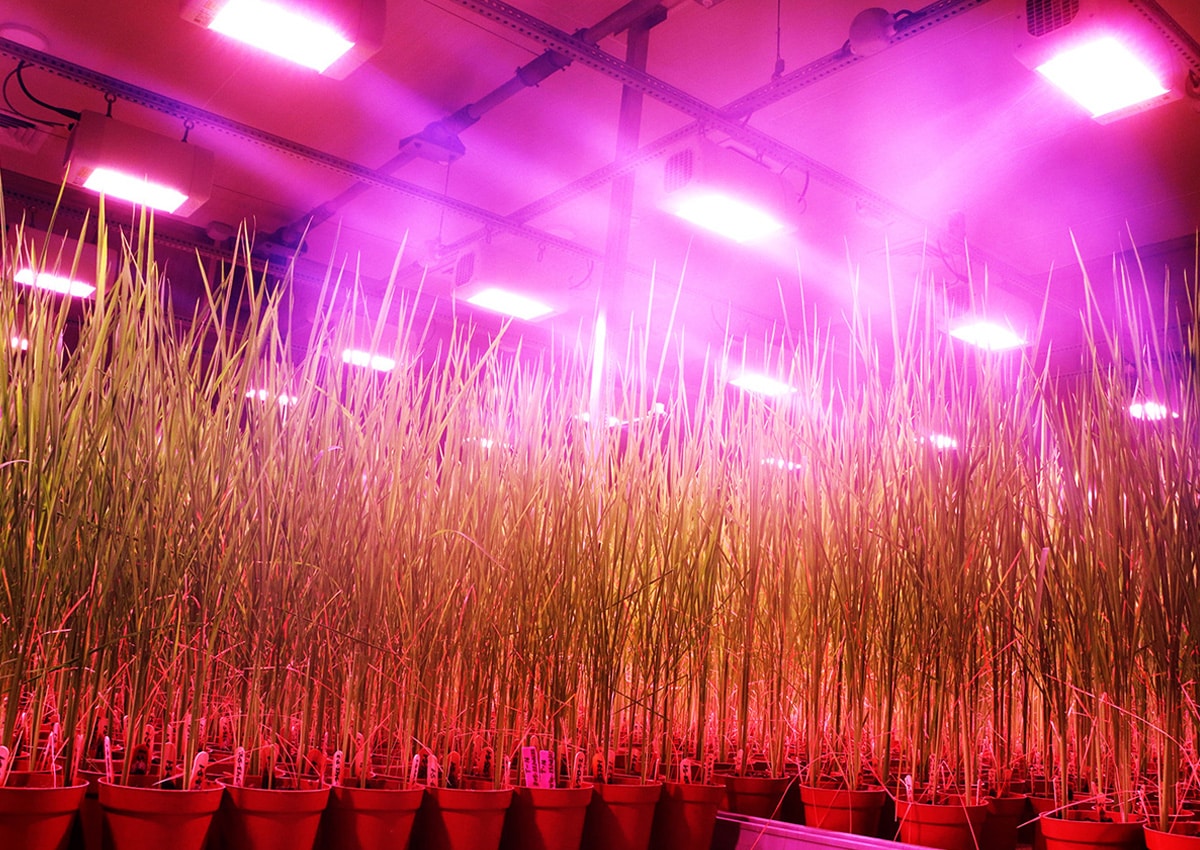Key Takeaways
- Revolutionary Speed Breeding: Scientists from the International Rice Research Institute (IRRI) have developed SpeedFlower, a groundbreaking speed breeding protocol for rice, doubling the number of crops per year from 2 to 4 or 5.
- Optimized Growth Conditions: SpeedFlower enhances rice growth by optimizing various factors like light spectrum, intensity, photoperiod, temperature, humidity, nutrient levels, and hormonal regulation.
- Rapid Flowering and Maturation: This protocol enables rice to flower in just 60 days and halves the seed maturity time, significantly accelerating the breeding process.
- Global Applicability: SpeedFlower is effective for various rice types, including significant varieties like indica and japonica, making it globally applicable.
- Validation and Impact: Tested on 198 genotypes from diverse sub-groups, SpeedFlower ensured all genotypes flowered within 58 days. This method can reduce the typical 6–7-year breeding cycle to just 1.5–2 years, as per ISARC Director Dr. Sudhanshu Singh.
The International Rice Research Institute (IRRI) has made a significant breakthrough in agricultural science by developing SpeedFlower, a novel speed breeding protocol designed specifically for rice. This innovation stands to revolutionize rice cultivation by enabling the production of 4 to 5 crops annually, almost doubling the yield compared to traditional breeding programs.
Optimizing Growth Conditions
The key to SpeedFlower's success lies in its meticulous optimization of various environmental factors. By carefully controlling the light spectrum, intensity, photoperiod, temperature, humidity, nutrient levels, and hormonal regulation, SpeedFlower creates the ideal conditions for rapid growth, flowering, and maturation of rice plants. This approach has been shown to induce flowering in rice within a mere 60 days and has cut down the time for seed maturity by half.
Global Applicability and Versatility
One of the most significant aspects of SpeedFlower is its wide-ranging applicability. The protocol has been proven effective for most rice varieties grown worldwide, including significant types like indica and japonica. This versatility ensures that the benefits of SpeedFlower can be experienced by rice farmers globally, potentially leading to increased food production and security.
Validation and Testing
To validate the effectiveness of SpeedFlower, a diverse set of 198 genotypes from the 3,000 Rice Genomes Project (3K RGP) was selected for testing at the IRRI South Asia Regional Centre (ISARC) in Varanasi, India. Under typical field conditions, these genotypes had a flowering time ranging from 58 to 127 days. However, under the optimized conditions of SpeedFlower, all tested genotypes successfully flowered within 58 days, demonstrating the protocol's efficacy.
Impact on Crop Research and Future Prospects
SpeedFlower has the potential to transform crop research and breeding. According to Dr. Sudhanshu Singh, ISARC Director, this protocol can expedite crossing and inbreeding activities, completing them in just 1.5–2 years compared to the usual 6–7 years required in field conditions. This acceleration in the breeding cycle can have profound implications for rice research, allowing for quicker development of new varieties that can better withstand environmental challenges and meet the growing global demand for food.
SpeedFlower represents a significant advancement in agricultural science, offering a more efficient, effective, and globally applicable method for rice breeding. Its ability to expedite the breeding process and increase crop yields has the potential to impact global food security.
Image provided by IRRI


